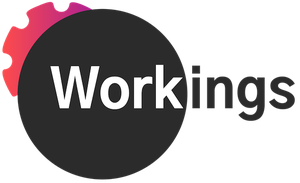Whether you’re a writer, a designer, a video producer—or even a manager distilling a new policy into a beautiful Slack post for your team—you’ve been there, right? Holding your breath, you pushed your brand-new content out into the world. Deep down, you were hoping for a high five or two, but mature professional that you are, you were also fully prepared for some pointed questions or harsh critiques. And instead: none of the above. Crickets, just crickets.
Most content people, including myself, aren’t really the sort who need new ways to feel insecure; any soul sensitive enough to carve meaning out of chaos is going to have some feelings when their handiwork fails, it seems, to register with anyone. In fact, they may even ask themselves—because as a type we are nothing if not dramatic—“Do I exist? Am I even real?”
The answer of course is, “Yes! You totally exist! You’re 100% real! And that thing you just made is some combination of thoughtful and useful. People are just busy and distracted. So, chin up... and all that.”
A weary coach might stop there, because it’s all true. But it’s not everything that’s true. What is also true—although it’s painful to hear—is that a content piece that falls utterly flat was:
1) most likely created in a vacuum; and
2) delivered in a way that didn’t actively encourage the kind of engagement required for content to really connect.
To create content that moves the proverbial needle—forges real understanding! raises awareness! persuades! earns buy-in!—creators need to do way more than produce. We first need to listen—and then, after we’ve crafted something and pushed it out, we need to listen again—to what landed, what didn’t, and why.
I think we believe—perhaps because we are for the most part sensitive souls—that we’re already doing this, but my take is: nope, we’re not. Not because we don’t mean to or want to, but because real listening is so effing hard. To listen, we (a bunch of congenital producers!) not only have to stop producing for a time; we also have to coax our tight-lipped audience into producing, into sharing with us exactly where their heads are and what they really need from us.
Which brings me to the couch in my office. I bought it at IKEA in Hong Kong nearly 20 years ago and the reason it matches my curtains is that I also bought those at IKEA in Hong Kong nearly 20 years ago. Over there, they occupied the same room—a tiny studio apartment. Here in the U.S., where many of our homes have (gasp!) multiple rooms, this couch and those curtains have long been separated. The couch landed up in a bedroom, where it was (concerningly, I now realize) casually referred to by the whole family as “the laundry sofa.”
Then, on the Friday before Halloween, a beloved child in our neighborhood, a high school sophomore who’d been at our bus stop since kindergarten, died by suicide. All who knew this dear girl and her sweet family were left reeling. Without even knowing what I was doing at the time, I started moving furniture around the house. Hulk-like, by myself. And after trying various configurations, my office ended up looking like this:




